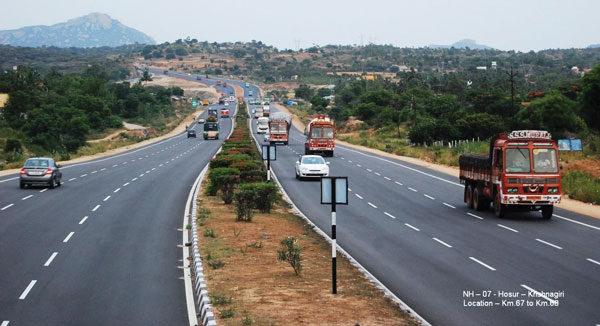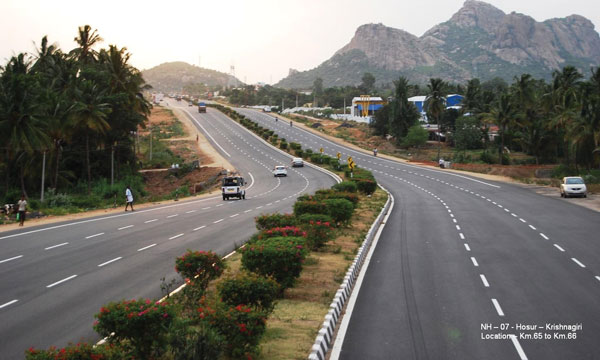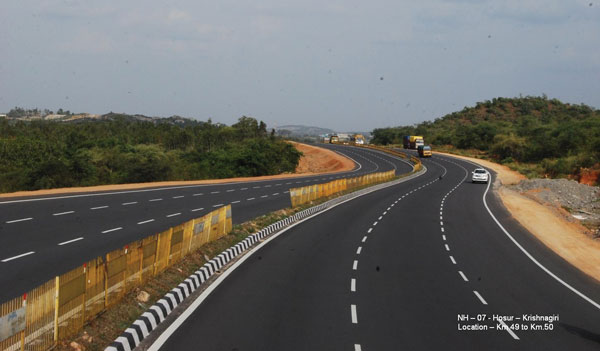R Infra: Transparency and Technology are Keys to Achieve Road Sector Targets

How do you see the budget 2014-15 for infrastructure sector in general and Road & Highways sector in particular?
The Govt. had just been formed and expectations from it were realistically not high although there was euphoria. Budget allocation to roads of Rs.37,880cr is not high rather it is a normal allocation. However, there are good initiatives in the budget like:
- Easier reserve requirement from banks for infra funding (no SLR for bond raised for infra) and long tenure loans for upto 20 – 25 years
- Setting up Infrastructure investment trusts
- Investment in port capacity augmentation
- Setting up institutions like 3P India for looking into public private partnership issues & vision to set up national industrial corridors.
The Finance Minister has proposed to award 8500 kms of roads in this fiscal. How confident are you about this proposal and how do you see the business opportunities for Reliance in coming years?
The target of 8500 kms as of now appears unrealistic. We are already nearing half year of completion. Getting back sentiment in road sector will take time. To kick start the cycle EPC has been proposed as the way forward given lack of equity. But EPC puts load on Govt. finances.
We are selectively looking at opportunities in state projects and we see good opportunity in secondary asset sale i.e. Mergers and Acquisitions (M&A) opportunities. We also have a decent order book of around Rs.2500 cr. construction works to go in our existing portfolio in next two years.

To revive road sector, what are the issues and policies which need to be resolved and fine-tuned to uplift investors' interests?
- Primarily, the National Highways Authority of India (NHAI) processes need to be streamlined. The decision making process is abysmally slow. A normal re-financial approval can take up to six months. Decisions on extension of time and change of scope are dealt with no sense of time even though processes are very clear cut. There is a need to bring in high degree of output and speed in the apex body of road sector. Once done, things like land acquisition and clearances will come in time automatically.
- Government and NHAI need to get into a mode where they agree that huge amount is stuck in disputes. If this is settled quickly and amicably, there will be equity back in hands of developers who will use it for further investment in the sector. Currently these disputes are lingering in arbitration and being challenged in courts.
- Banks' / financial institutions' faith in the road sector needs to be rebuilt. Projects like Delhi-Gurgaon, Delhi-Jaipur and other projects that had to be cancelled prior to commencements, have left a bad taste with banks.
- In the name of contractual requirement for major repairs and maintenance, capex is being forced on investors, who are already financially stressed. NHAI needs to look at maintenance more in spirit – is it really required and in which part of the project – rather than forcing to do major overlays for entire stretch. This will be an issue in next five years as many projects will hit the contractual maintenance requirement.
It can be done and would have a positive impact. However, for a two-year plan to succeed there has to be monthly progress on ground. We would love to share the optimism and vision of the new Govertment. However, we need to see progress on ground in policy, processes and more importantly in mindset of the bureaucracy. Technology and transparency are keys to government being able to achieve its targets.
For a successful project completion, mechanization with innovative equipment plays a vital role besides many other things such as planning, financing etc. How well equipped is your equipment bank and what are the selection criteria placed in your company while buying new and advanced equipment?
All companies today want to be asset light. Hence leasing, hiring and contracting of equipment are crucial. The selection criteria essentially are how old equipment is being used by the contractor and whether the equipment is environment friendly. Today banks are very stringent on environmental aspects. Hence our equipment should not just operate under stipulated environmental norms but also adhere to Global standards. In one of our projects, a development bank expects us to go beyond Indian regulations and follow global standards.

Lots of innovation is possible in materials being used and construction technology. Again government departments should be open to these innovations. Typically innovations help optimize cost – and government officials are apprehensive that by allowing cost optimization they are compromising on the contract. Government as a client should be concerned on quality of the road desired rather than the cost being incurred.
R-infra's 10 out of 11 road projects are now operational and revenue generating. Foreseeing opportunities in Road sector, what are Reliance's future plans? How many projects/length are you targeting? Are you keen on BoT or EPC projects?
Our targets are aligned to benchmark return expectations rather than order book. We are focused on bottom lines rather than increase top line at the cost of profitability. We are continuously on the lookout for opportunities in BoT space which meet our return expectations.
R-infra is renowned for sustainability, innovation, and safety and has been awarded for best project management for its IT application called ‘Simplify' which is first of its kind. Could you please describe the functioning of this application and also about R-infra's other innovative solutions which have got lots of recognitions?
Simplify is an integrated work flow management tool which interfaces online with project management tool – Primavera. It helps monitor project progress vis-a-vis the plan and brings transparency to the whole exercise of project management. It has brought in:
- Ease in entry of data with availability of visual strip chart on the RFI screen.
- Easy navigation within the applica- tion using web based menu
- Anywhere anytime access – Simplify can be even accessed on Mobile platform to perform day-to-day field work using any smart phone.
- ERMS: Enterprise Road management system. It's an online tool that helps real time control of tolling and maintenance operations. Toll data patterns over the period are captured. Auditing and reporting happen online. State of road repairs can be monitored and fed online. Accident management can also be monitored online.
- E tolling: We have systems in place where city based users can recharge monthly passes online through net banking / credit cards. Also SMS reminders are sent to them when their pass is nearing expiry.

What are the systems placed within the company to ensure that the Group's technical and managerial prowess is kept abreast with global development through training, and retraining which would also ward off the the challenges of obsolescence?
Training is a strong focus area for us. While we keep tab on global developments, we focus on internal knowledge transfers – eg. lessons learnt in implementation of best practices of tolling operations in one project need to be transferred to other projects in other states.
Also, cross functional training is another focus area. We are BoT developers hence we ensure our technical staff appreciates accounting and financial aspects of business – in terms of financial returns, risks and compliances.
These assets have been in use for 20 – 30 years but employee average tenure is 5 - 6 years. We strive to have good document management systems so that work flow is not affected when there is change in personnel. IT tools and ISO systems play a big part in this.


















